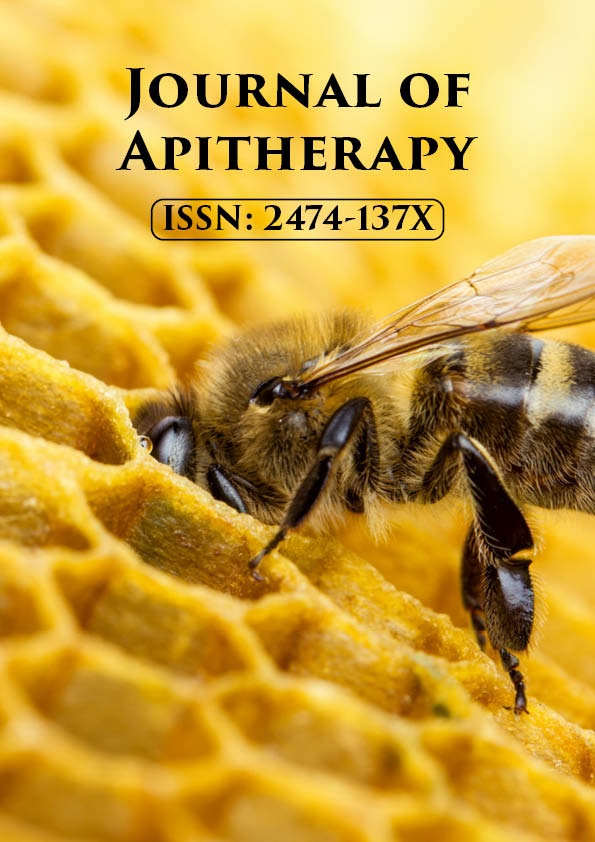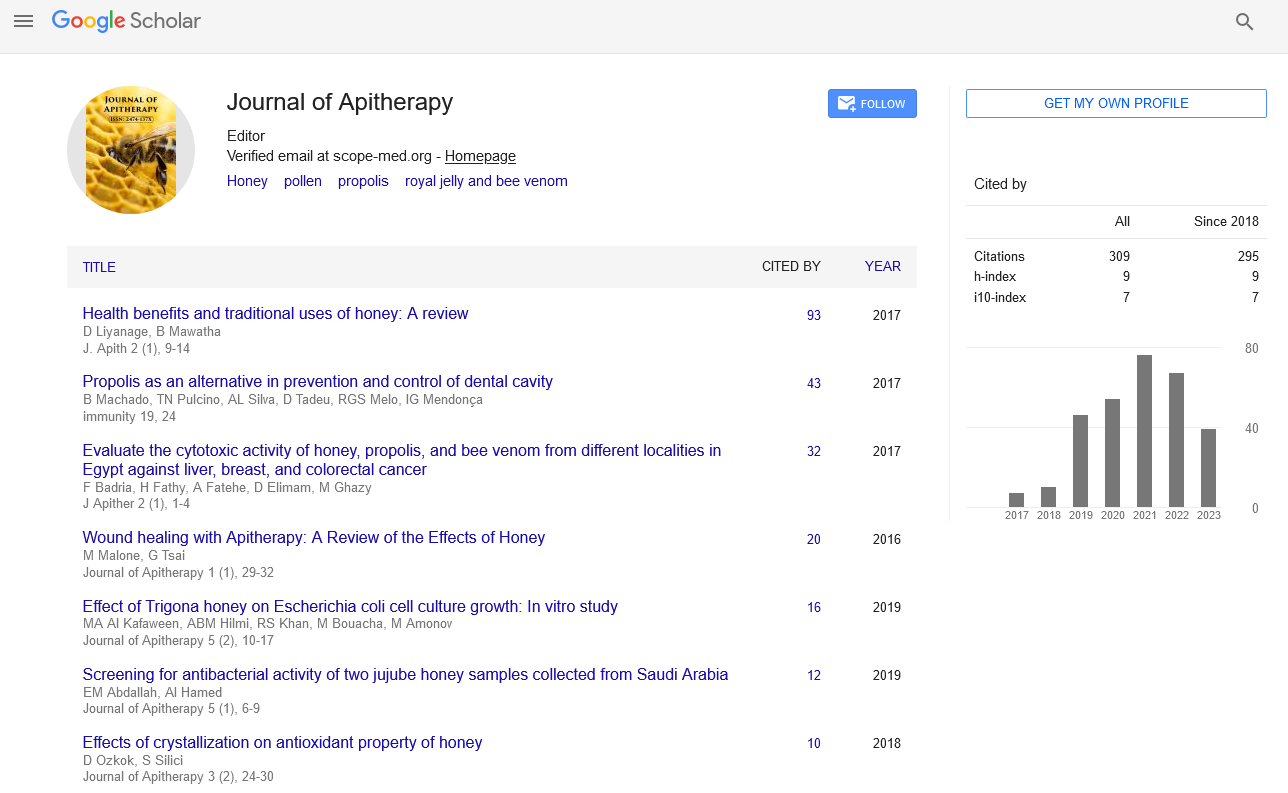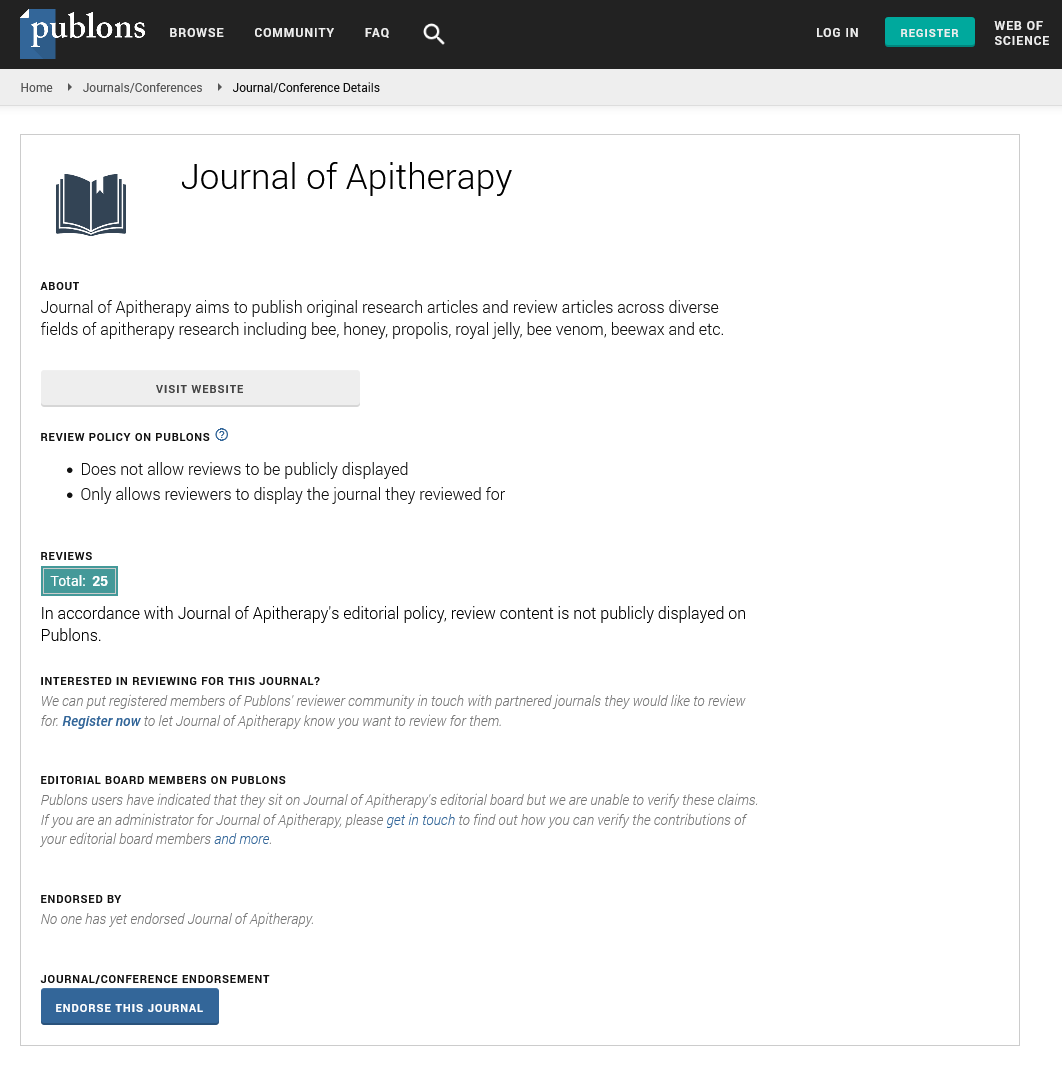Commentary - Journal of Apitherapy (2022)
Commentary on Honey Antibacterial Activity
Shyamapada Mandal*Shyamapada Mandal, Department of Zoology, Gurudas College, Kolkata, India, Email: samtrepned@gmail.com
Received: 04-Jan-2022, Manuscript No. JAPITHERAPY-22-52071; Editor assigned: 06-Jan-2022, Pre QC No. JAPITHERPAY-22-52071 (PQ); Reviewed: 20-Jan-2022, QC No. JAPITHERPAY-22-52071; Revised: 25-Jan-2022, Manuscript No. JAPITHERPAY-22-52071 (R); Published: 01-Feb-2022
Description
Honey contains antibacterial and antioxidant components such as phenolic compounds and carotenoids. Honey is regarded as a functional food with beneficial health benefits. The main characteristics of so-called’medical-grade honey, which is topically used for the treatment of burns, wounds, and skin problems, are its effective antibacterial and antibiofilm actions. Honey’s bioactive components, antioxidant and antibacterial properties were not dependent on whether it was monofloral or polyfloral, but rather on the type of flowers foraged by bees and its geographic origin. Indeed, honey’s medicinal value has been documented in the world’s earliest medical literatures, and it has been known to have antibacterial and wound-healing properties since ancient times. Honey’s healing properties are related to its antibacterial properties, ability to keep wounds moist, and high viscosity, which helps to build a protective barrier against infection. Most honeys have antibacterial properties due to the enzymatic generation of hydrogen peroxide. Non-peroxide honey, on the other hand, has strong antibacterial properties even when the hydrogen peroxide activity is stopped. Honey’s dark colour indicates that it contains more antioxidants and has the highest biological characteristics. Honey’s capacity to resist human gastrointestinal conditions is critical to its health advantages as an oral therapeutic agent for diarrhoea caused by Shigellasonnei. Honey’s usefulness and potency against microorganisms is determined by the type of honey produced, which is determined by its botanical origin, bee health, provenance, and processing method. Antibiotics combined with honey had a higher antibacterial activity, and synergistic actions against biofilms were seen. Honey has been used in the treatment of surface wounds, burns, and inflammation in medicine, and when combined with antibiotics, it has a synergistic effect. Honey’s anti-inflammatory and antibacterial properties will keep the damaged region wet, preventing fibrosis and degeneration. Honey is an excellent choice for plastic surgery since it promotes quick healing and reduces scars. Honey protects skin maceration because of its high osmolarity and ability to keep the damage wet. Honey reduced pain and inflammation even in non-infected areas. Honey’s use in medical contexts has decreased economic loss and offered proved economic benefits by cutting direct expenses in contrast to traditional therapies, using fewer antibiotics, and requiring less hospitalisation time. Honey has been recognised as an ancient food source with unrivalled medicinal, biochemical, physical, and curative properties. Chromium oxide nanoparticles were precipitated by reducing potassium dichromate solution with natural honey containing carbohydrates as a major component that acts as a reducing agent. Thermal liquefying of crystallised honey is the most practical method of totally liquefying honey for beekeepers. For successful and safe liquefying of crystallised honey, a regulated mild thermal treatment is often used. In this work, we found that thermal liquefying honey at various temperatures has no effect on its antibacterial activity against Pseudomonas aeruginosa and Staphylococcus aureus, and in certain situations, it may even boost its antibacterial potential. Antibiotic resistance among bacterial infections necessitates the discovery of new treatment medicines, particularly natural ones. Honey’s role in health treatment has been documented in the earliest medical writings. Honey’s antibacterial effects are now being researched, particularly for the prevention of resistant strains. However, this activity has gotten less attention as a result of mechanistic findings. When bacteria were exposed to the investigated honey, Iranian honey had higher antibacterial and anti-biofilm activity than Manuka honey. In the presence of honey, SEM revealed division inhibition, loss of structure, and significant changes in cell shape and surface.
Copyright: © 2022 The Authors. This is an open access aricle under the terms of the Creaive Commons Atribuion NonCommercial ShareAlike 4.0 (https://creativecommons.org/licenses/by-nc-sa/4.0/). This is an open access article distributed under the terms of the Creative Commons Attribution License, which permits unrestricted use, distribution, and reproduction in any medium, provided the original work is properly cited.







